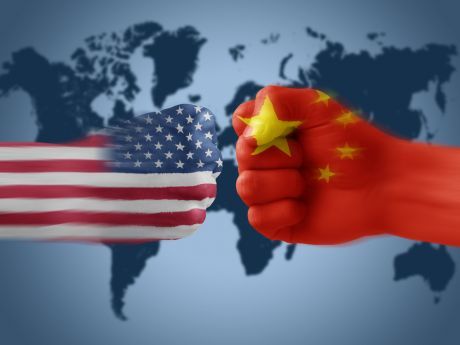News
You are here
US-China climate deal: nothing new and not good enough

December 21, 2014
The US-China deal, announced on Nov 11th, has been lauded by many, including many progressives and environmentalists, as “ambitious”, “historic”, and “game-changing.”
The deal commits the US to a reduction in carbon emissions of 26-28 per cent by 2030 (from 2005 levels). And China to have its emissions peak by that same year (earlier if possible), with a commitment to have 20 per cent of its energy from non-fossil fuel emitting sources (solar, wind, nuclear) by that time. The deal, according to Climate Interactive and MIT, will keep 640 billion tons of CO2 out of the atmosphere this century.
It finally dislodges the diplomatic impasse that has stymied international negotiations to address climate change, as the two largest emitters of CO2, who together account for 40 per cent of global emissions (china 25 per cent and US 15 per cent), have failed to reach an agreement on “equitable”, mutually binding targets. Now with both countries on board it is hoped that others, such as India (the second largest growing economy in the world behind China), Russia and the EU (which has already pledged to reduce emissions by 40 per cent by 2030) will now come together for the next climate summit in Paris in 2015 to hammer out a deal that will adequately address the issue.
The deal also boosts renewable green energy expansion in private markets, further increase their cost effectiveness, while signalling to investors the ominous prospects for fossil fuels in the future; As Naomi Klein wrote, “Recent years have seen a proliferation of movements blocking the infrastructure needed to export dirty fossil fuels to Asia. This deal makes it clear that the market for such dirty products is winding down in China, which is one more reason for companies not to invest billions in new pipelines or export terminals. Low oil prices are already taking a toll on more expensive extraction methods like tar sands mining and this deal will be another strike against them.”
Inaction
Many of the deal's critics claim that the targets set by both Obama and Chinese president Xi Jinping are not major concessions at all, because both nations are already on a trajectory to achieving them.
Despite the fact that China’s rapidly growing economy projects a massive increase in their CO2 emissions over the next 15 years, it has been a world leader in building renewable energy capacity. So much so that its promise to have 20 per cent of its total emissions come from renewable sources is well on its way to becoming a reality. This promise amounts to adding a whopping 800-1000 gigawatts of zero emission generation, more than all the coal fired plants that exist in China today and almost as much as all the electricity generated in the US today.
The US is also on it's way to achieving its pledge without any new action. Policies passed to improve fuel efficiency and those slated for coal-fired electrical plants in the coming year, combined with the expected with market expansion of renewables, mean that the US will likely meet its end of the bargain by 2030.
Ethan Zindler, an analyst at Bloomberg New Energy Finance noted; “The commitment on the U.S. side is a summation of a variety of commitments that have already been made”
Capitalism vs the environment
The deal comes nowhere close to achieving what the science tells us is necessary to avoid “catastrophic” climate change. In its recent report the Intergovernmental Panel on Climate Change (IPCC) concludes that emission reductions will have to be whittled down to 40-70 per cent by 2050, and then to zero by end of the century, if the world wants to avoid breaching the 2 degree mark—causing “cataclysmic” climate change that would result in widespread food and water shortages, increasing frequency of devastating “super storms” and rising see levels that would put much of the world’s islands, coastal regions and their population under water.
Furthermore, the IPCC estimate of keeping CO2 concentrations at 450 ppm, to keep average global temperatures below 2 degrees is probably too high, given the climate chaos we are already experiencing with only a 0.8 degree increase. The only reasonable and safe mark is 350 ppm, well under current concentrations of 390 ppm. This will require massive amounts of public investment, planning and regulation, and redistribution of income and wealth, both between nations and within them.
While such magnitudes of public interventions are in the realm of possibility—as indeed industrial nations were able to make similar transformations to their economies during WW2, in less time, maintaining living standards while mobilizing the nations labour and resources to fighting the largest war in human history—unfortunately the continued imperative of profits and growth in a global capitalist system militates against it. As does the cynicism of world leaders responsible for the future of human civilization.
Section:










